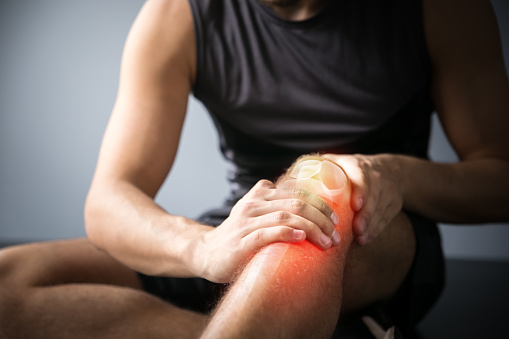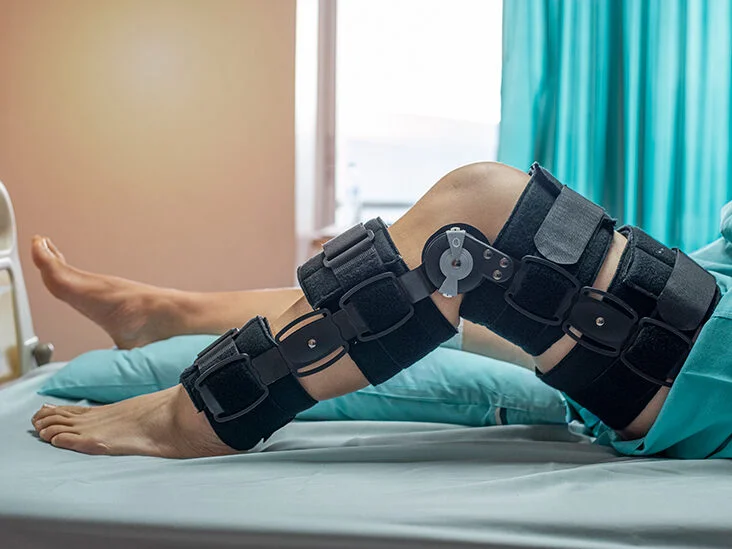If you're experiencing inner knee pain, identifying and pinpointing the cause can be hard. Knowing what is causing your discomfort can help you take action toward relieving your symptoms, so let's dive into the most common causes of inner knee pain.
We'll discuss potential sources of this chronic issue and explore methods for addressing them. By exploring these potential root causes, we aim to empower readers with tools to get back on their feet as soon as possible.
Inner Knee Pain

Inner knee pain is a common issue and can stem from various sources. Generally speaking, this type of discomfort manifests in the region around the inner half of the knee joint. It can be sharp or dull, constant or occasional – but inner knee pain should not be ignored regardless of its presentation.
Possible Causes Of Inner Knee Pain

- Arthritis: Osteoarthritis and rheumatoid arthritis are two common types that can cause joint pain and swelling, including those of the knees.
- Bursitis involves inflammation in one or more bursae within your knee joint – small fluid-filled sacs that reduce friction between bones and muscles.
- Tendonitis occurs when the tendons in your knee become inflamed, possibly due to repetitive movements or overuse.
- Meniscus tear: The meniscus is a cartilage-like material that acts as a cushion and shock absorber between two bones of your knee joint, and it can be damaged due to injury or overuse.
- Knee injuries: Any type of trauma to the knees – sudden or gradual – can lead to inner knee pain. Certain sports, such as basketball, soccer, and running, can put added stress on the knees, resulting in tears or inflammation if not managed properly.
- Baker’s Cyst: Also known as a popliteal cyst, this type of swelling that occurs behind the knee due to an accumulation of fluid.
- Chondromalacia patellae: This condition involves damage to the cartilage under the kneecap and can cause pain when the knee is bent or extended.
- Osteochondritis dissecans: In this condition, fragments of bone, cartilage, or both become loose in the knee joint and can lead to inner knee pain and limit movement.
- Overuse injuries: Running or biking for long distances can put extra strain on your knees over time which may cause inflammation and discomfort.
- Gout: Gout is arthritis when too much uric acid builds up in the body and can cause inflammation in the knee joint.
These are just a few possible sources for inner knee pain – other factors such as age, weight, and genetic predisposition may also play roles. It's important to speak with your doctor if you're experiencing chronic knee discomfort, so they can help determine what might be causing it and how best to address it.
Treatment of Inner Knee Pain
Once you've identified the source of your inner knee pain, taking steps toward treating and managing it is important. Depending on the cause, treatment may involve rest, physical therapy, medication, or surgery.
- Rest: Avoid activities that put extra strain on your knees until the issue has been resolved.
- Ice/heat: Applying heat or ice packs to the affected area can help reduce inflammation and swelling.
- Physical therapy: A physical therapist can provide exercises and stretching to help build strength, flexibility, and range of motion in your knee joint.
- Medication: Over-the-counter anti-inflammatory medications such as ibuprofen or naproxen sodium may be recommended to reduce pain and swelling.
- Surgery: In some cases, surgery may be needed to repair any damage or correct structural issues in the knee joint causing pain.
- Alternative treatments: Several alternative therapies can help treat inner knee pain, such as acupuncture and massage therapy.
It's important to note that treatment should be tailored to each individual, and it's best to consult with a doctor or physical therapist before beginning any type of therapy.
With the right diagnosis and treatment plan, most people can find relief from their inner knee pain. It's important to remember that if your symptoms don't improve after trying conservative treatments, you should seek medical help as soon as possible to prevent further injury or damage.
Properly managing and treating your inner knee pain can reduce discomfort and help you continue living an active lifestyle.
Exercises to Relieve Inner Knee Pain
- Hamstring Stretch: Sit on the floor with your legs extended before you and loop a towel or resistance band around one foot. Gently pull your toward your body, keeping your back straight and engaging your core muscles as you feel a gentle stretch in the back of your thigh. Hold for 30 seconds and repeat 3-5 times before switching sides.
- Calf Stretch: Stand facing a wall arm’s length away and place both hands against it for support. Place one foot behind the other, bending the knee of the front leg while keeping the back leg straight, with both feet firmly planted on the ground. Hold this position for 30 seconds and switch sides, repeating 3-5 times.
- Quadriceps Stretch: Lie faces down on a flat surface and uses your hand to bring one foot towards your buttocks, keeping the knee bent. Hold this position for 30 seconds before switching sides, repeating 3-5 times.
- Knee Flexion/Extension Exercise: Sit in a chair with both feet firmly planted on the ground and slowly flex the affected knee by bringing it toward your chest while keeping your toes pointing forward. Slowly extend the leg straight before you, and hold for 2-3 seconds before returning it to the starting position. Repeat ten times for three sets.
- Gluteal Strengthening Exercises: Lie on your back with both knees bent and feet flat. Squeeze your glutes, lifting one leg off the ground with your knee bent at a 90-degree angle. Hold for 2-3 seconds before returning to the starting position. Repeat ten times on each leg for three sets.
By incorporating these exercises into your daily routine, you'll be able to strengthen the muscles around the knee joint and relieve inner knee pain. However, it's important to consult a physician or physical therapist if you have any concerns about your condition before beginning any exercise program.
FAQS
What are the symptoms of inner knee pain?
The most common symptoms of inner knee pain are a dull ache or sharp pain in the inner side of the knee, difficulty bending and straightening the leg, tenderness when pressing on the area, and stiffness or reduced range of motion.
Does inner knee pain go away?
Inner knee pain can typically go away with rest, ice/heat therapy, non-steroidal anti-inflammatory drugs (NSAIDs), physical therapy, and exercise. However, if symptoms persist or worsen despite treatment, it's important to consult a doctor for further evaluation and treatment.
How can I make my knees stronger?
The best way to make your knees stronger is to perform exercises that target the muscles around the knee joint, such as hamstring and calf stretch, quadriceps stretch, gluteal strengthening exercises, and knee flexion/extension. Maintaining a healthy weight is important to reduce any additional stress on the joint.
Conclusion
Knee pain can be a debilitating experience, with inner knee pain being one of the most common and often overlooked causes. Knowledge is key to successfully treating this problem and preventing further issues, so awareness of the most common cause of inner knee pain is important. While many cases could indicate a more serious underlying issue, physical activities such as running or playing sports are usually the root cause.

What is Hyperpigmentation
Apr 20, 2023

Home and Natural Remedies for Toothache Pain
Apr 19, 2023

Best Foods That Are High In Zinc
Apr 18, 2023

How to Get Rid of Canker Sores
Apr 19, 2023

What Is a Zero-Carb Diet
Apr 25, 2023

Benefits of Lemon Balm
Apr 25, 2023

Common Causes of Inner Knee Pain
Apr 24, 2023

Health Benefits of Biotin
Apr 26, 2023



